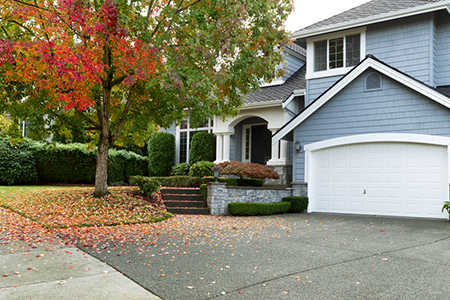Solar Shingle Roofs - Options and Costs
PV Solar Shingles Roof from Tesla: Evolution of Solar Roofing: Current Options & Costs
In 2011, Dow Chemical has disrupted the solar power industry when they unveiled their innovative PV solar shingles, an elegant, roof-integrated alternative to the “old-school” bulky crystalline solar panels for residential roofs. Dow’s PowerHouse BIPV (building integrated photovoltaics) solar shingles were quite appealing and easier to install than traditional PV solar panels. However, after just five short years Dow is getting out of the solar shingles business. They have decided to no longer manufacture and cease selling their break-through PowerHouse solar shingles
Until Dow discontinued its PowerHouse solar shingle line this past June, it was a fairly popular option for homeowners who wanted a BIPV solar shingles roof. PowerHouse shingles were wireless and easy to install, snapping together seamlessly. The shingles collected 12 watts of electricity per square foot, and were “grid-tied,” meaning they could send excess electricity into the local power grid through an inverter box system. Although the inverter box had to be set up by an electrician, the shingles were as easy to install as conventional asphalt shingles.
BIPV Solar Shingles Roof you can Buy Today and How much it will cost:

CertainTeed’s Apollo line of grid-tied BIPV solar shingles are still on the market, and they collect about as much energy per square foot. Apollo shingles are designed for versatility, thin enough to lie on top of, integrate with, or replace an existing roof. Their silicon structure is designed to withstand winds of up to 110 mph. Although CertainTeed estimates that a 350-square-foot solar-shingle layer can cost as much as $20,000 to purchase and install, they also claim that it can cut a residential electricity bill by 40 to 70 percent.
A fully-integrated Solar Shingles Roof you can Buy Soon from Tesla:

Tesla’s recent merger with SolarCity has left everyone imagining great things for solar technology. Tesla is known for creative solutions to sustainability problems, as well as an “integrated clean energy” vision that incorporates an array of clean-energy ideas. They unveiled their newest innovation at the end of October, and it turns out to be an inspired riff on solar shingles!
How Do Tesla PV Solar Shingles Work?
Tesla solar shingles are designed to work in the same way as Certainteed Apollo and Dow Powerhouse technology, but Tesla went the extra mile to make sure their new solar shingles would appeal to consumers. As with Tesla’s electric cars, innovative function is never an excuse to neglect form. Although the tiles are made out of tempered glass, they’re available in four distinct patterns: smooth, distressed wood, rugged slate, and terra cotta. When they’re installed, they look just like a conventional roof.

The tempered glass has a similar molecular structure to quartz, and according to Tesla it has a “quasi-infinite” life-span. The tiles will even be fitted with heating elements to melt snow in colder climates. Since conventional roofing shingles only last 15-20 years, and are vulnerable to ice and water damage, this innovation could represent enormous savings.
Tesla hopes that its premium design – especially the idea of having an indestructible roof, whether you live in Maine or Michigan – will give them a market advantage. Tesla does score extremely high with customer satisfaction and brand commitment, so their bet may pay off in the long run.
So, how do Tesla’s “invisible” solar shingles work, and how do these glass tiles fit into a solar-power system? The basic mechanism is the same as the one used in conventional solar panels. Solar shingle and solar panel systems are both photovoltaic, meaning that they generate electricity from light. As we explained above, Tesla solar shingles are made out of textured glass designed to look like different types of roofing material. Light passes through this glass into a standard flat solar cell.
Tesla’s solar shingles operate at only a two-percent power transfer loss compared to solar panels, and Tesla’s engineering team hopes to increase energy efficiency over time. Their textured solar tiles contain microscopic louvers, or curves in the glass surface that reflect light. These are used to create opacity for textured solar tiles, so that they look like a piece of slate instead of a shard of mirror. Tesla engineers believe that these small reflective surfaces can eventually be used to boost the photovoltaic power of the solar tiles. There’s precedent for this idea – some solar panel designs already include mirrors or reflective surfaces designed to increase photovoltaic power in a similar way.
Tesla’s system stores accumulated power in lithium ion Powerwall batteries, so that solar power can be used to provide night-time electricity to the whole house. This battery addition is designed to ensure that residents can take full advantage of power generated during the day, when solar panel collection often outpaces energy use. Battery options are also a response to uncertainty about solar subsidies, which has damaged consumer confidence in the savings promised by solar power.
Lithium ion batteries haven’t yet caught on as a standard part of a solar package, but prices on this newer technology have been falling for the past several years, so look for lithium ion batteries to become more and more popular among Tesla and other manufacturers. Tesla’s betting that they will appeal to consumers, and that manufacturing costs may drop by as much as fifty percent over the next decade. Right now, unfortunately, Tesla’s solar batteries cost $5,500 – and depending on electricity use, a homeowner may need to purchase two or more!
Rollout and Projected Cost of Tesla Solar Roof:
Tesla envisions a rollout over the next nine months, hoping that solar shingles will account for five percent of all new roofs installed in the United States within two years. As with solar panels and electric cars, the initial expense might be out of reach for many consumers. However, Tesla hopes that over time, their solar shingles will become commonplace. They not only allow homeowners to power their homes via solar, but also to avoid many of the medium- and long-term costs of roof and Home maintenance.
Solar shingles will likely be among the most expensive roofing materials on the market for some time to come. However, roofing a single-family residence can cost between $7,000 and $70,000, depending on size, floor plan, materials, and a number of other factors. So it’s hard to tell just how much you’d have to spend on your own brand-new solar roof. Utility costs are on the rise, which means that potential savings over the next thirty or forty years could be huge.
Generous federal subsidies are still available, which means that now is an ideal time to invest in solar. Twenty-seven states offer additional incentives that can bring the price down even further. Solar remodels may also increase the resale value of your home, which might make it a worthwhile investment.
So, is the forecast sunny for solar shingles? It’s hard to say – and as with so many other new technologies, money is the deciding factor. Like their famous line of electric cars, Tesla solar panels are definitely a high-end home-improvement option. As with solar panels, there’s also the possibility that technological innovation could drastically lower costs in the near future. The promise of eventual savings, as well as the sheer ingenuity of Tesla’s solar shingle design, may make solar shingles an attractive option for homeowners.
Tom Stachler is a licensed Broker and Builder marketing homes and properties in the Ann Arbor Michigan area. Also search for properties, houses, and condos for sale in Saline, Dexter, Chelsea, Milan and the Ypsilanti real estate markets. Check out the handy Links for realty related information and and MLS inventory access above.












